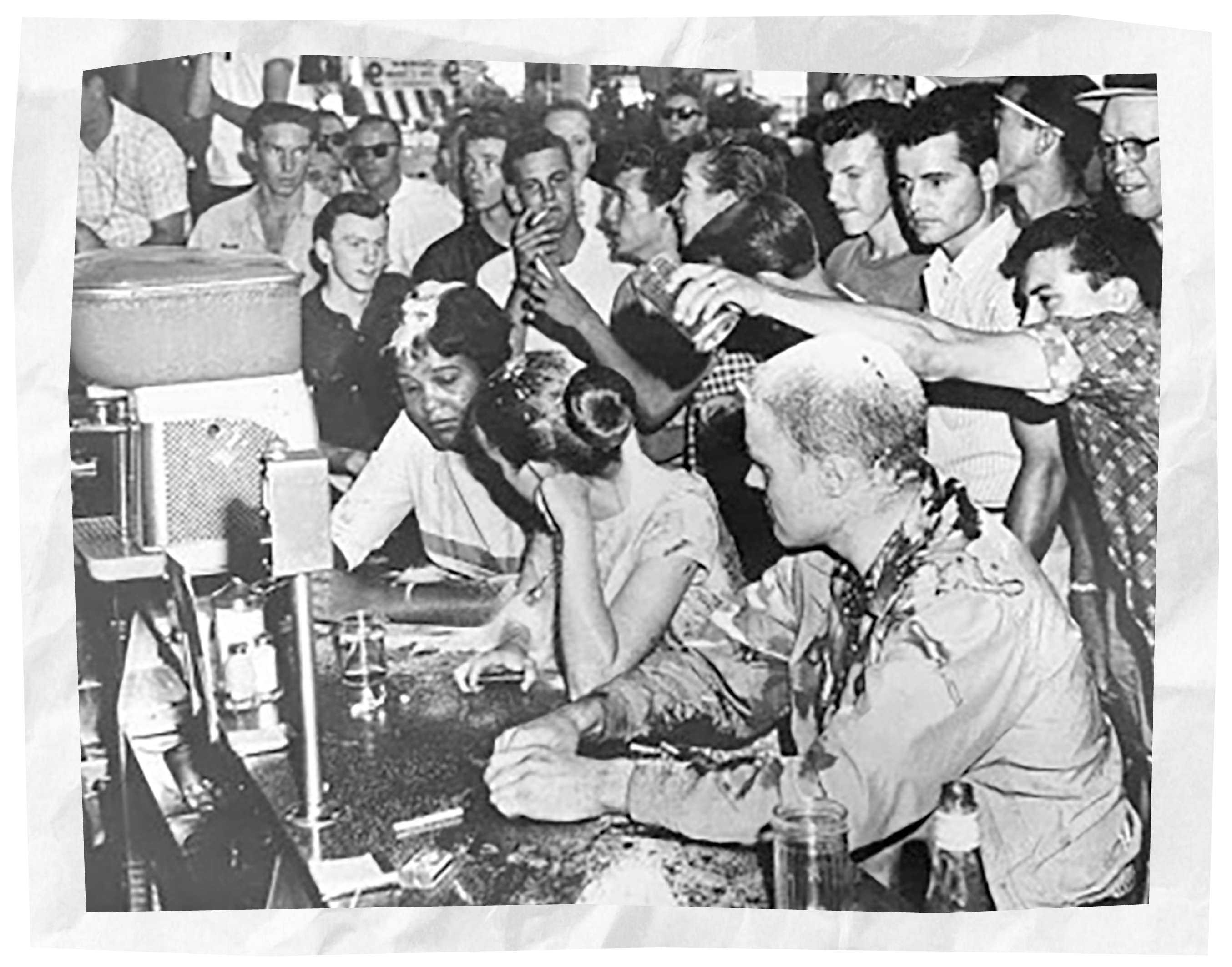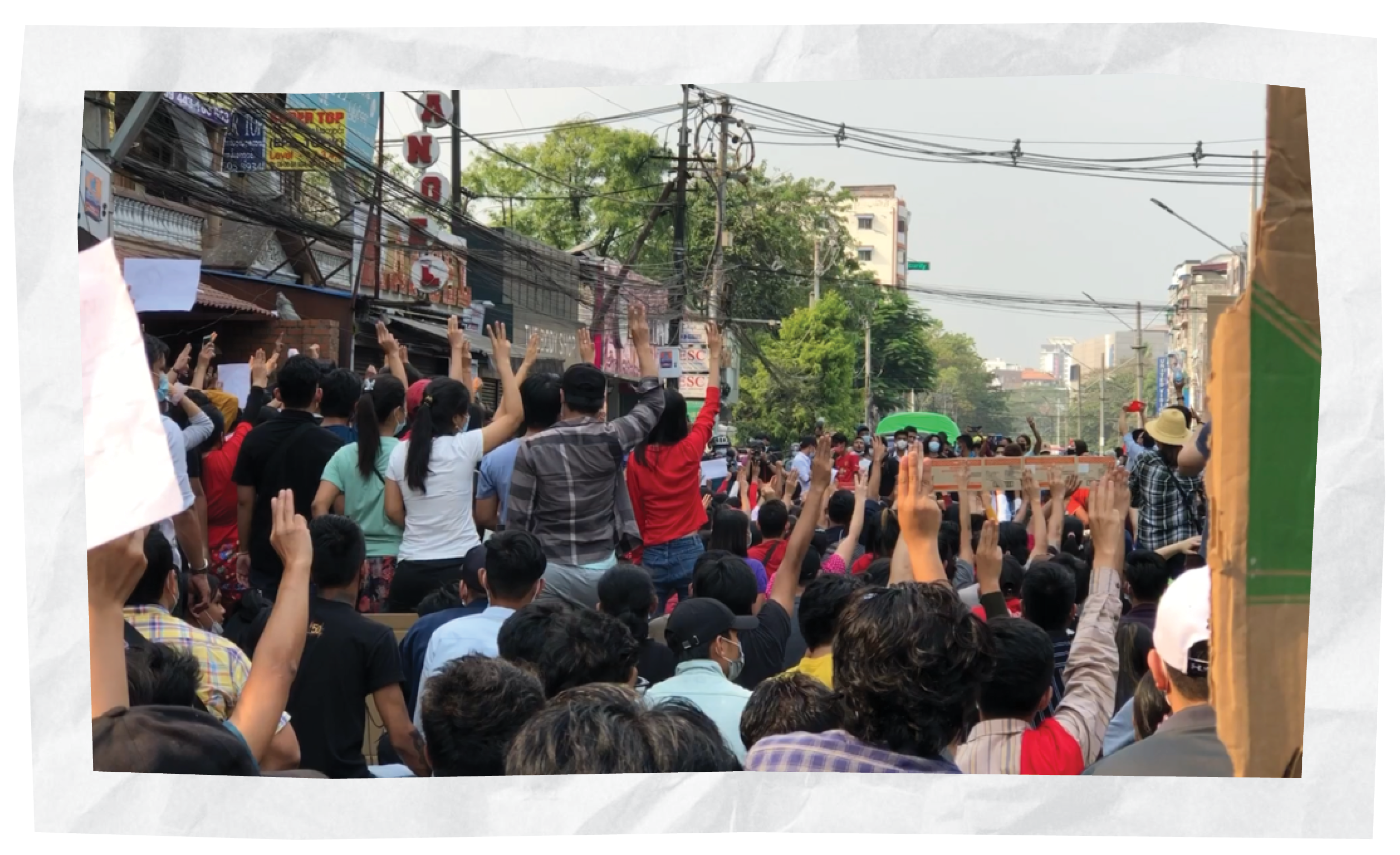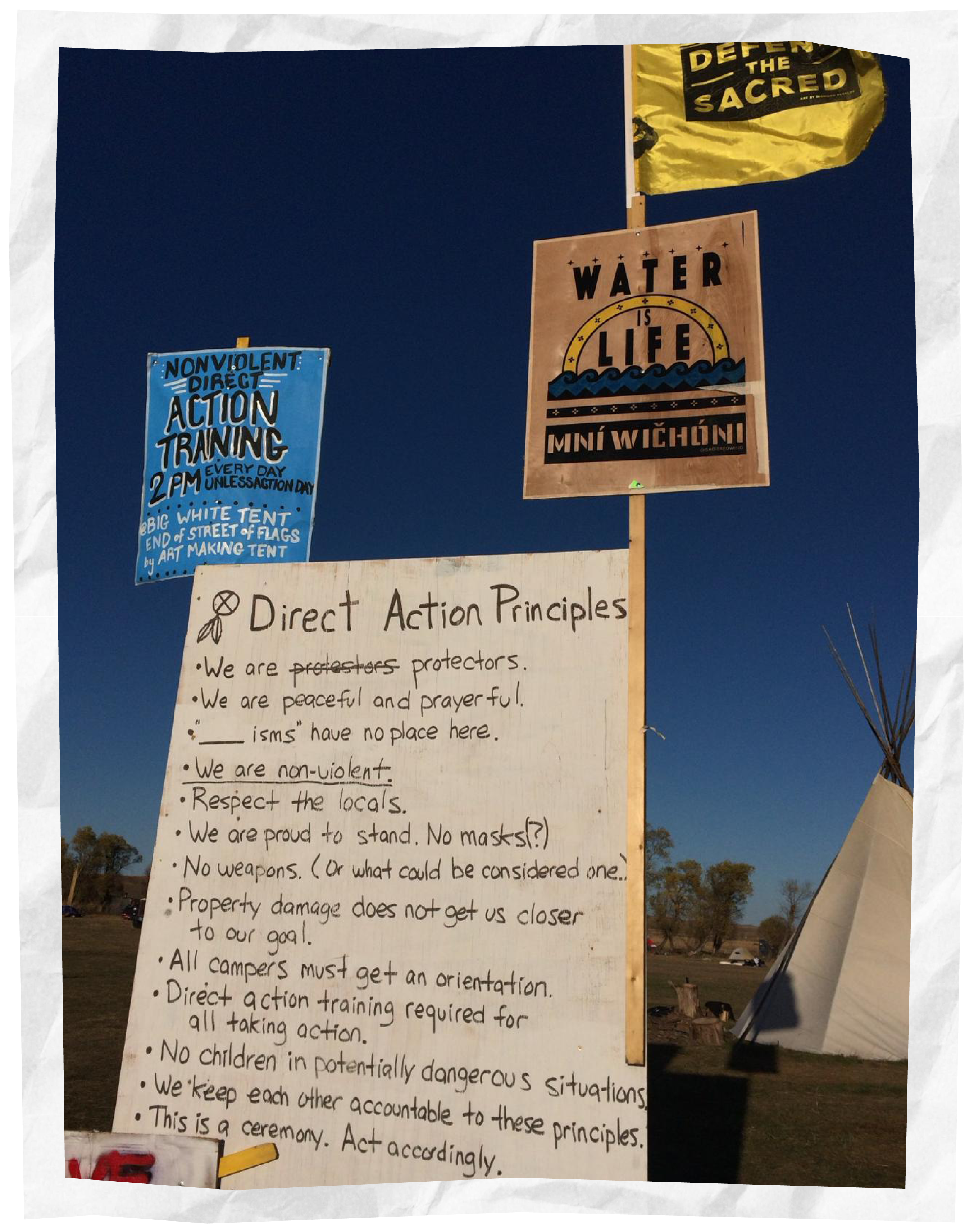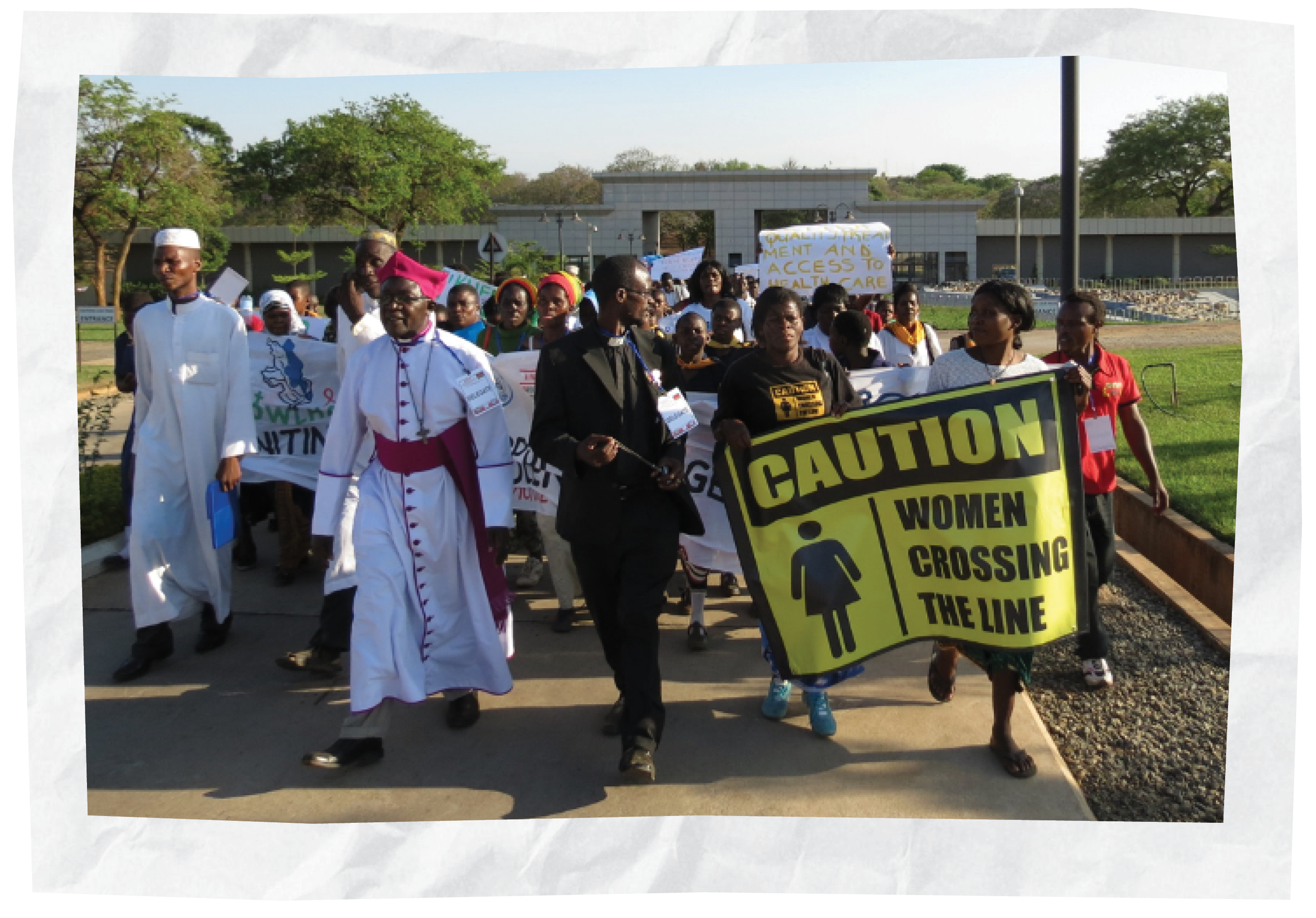Theme 5: Creating Transformational Narratives

A transformational narrative makes it possible for people to imagine new possibilities. A transformational narrative dares to ask, ‘What if?’
- What if you are just as powerful as those at the top of the social and political ladder?
- What if you claim that power alongside others in your community?
- What if the unjust systems that operate in our society were changed?
- What if you could give birth to the liberated and beautiful world of your dreams?

In addition to unmasking dominant narratives, we need to affirm our own transformational narratives. Activists working on narrative change have shared the following reflections and lessons:
- Dominant and oppressive narratives often prevail within our own communities, organisations, and movements. Transformational narratives are not only about projecting our values into the wider world but also embody values, norms, and visions within the spaces of our own lives, actions, and activism. Transformational narratives are grounded in our specific context and culture – which may be virtual, organisational, and geographic.
- Invisible power is always contested and so can also be transformative. Invisible power is not just an oppressive form of power over. Social change cannot happen without transforming invisible power: mobilising our own narratives – offering people a positive narrative that contrasts with the one they are used to – is a key strategy for doing this.
Activity 6: Transforming narratives
This process is a first step in creating and mobilising our own transformational narratives.
Materials: A selection of visual images that represent resistance to dominant narratives or that express transformational narratives from social-change struggles and movements. Compile a selection of images with which participants are familiar. Include the images in this chapter if they are useful.
Step 1: What are transformational narratives?
Plenary: How can we challenge dominant narratives? As we have seen, when we unmask and de-normalise a dominant narrative, we show that it is not ‘natural’. Because it is shaped by people, it can also be transformed by people. Ask:
- Can you think of any limitations to unmasking as a way of changing the narrative? Is it enough to expose and critique? Can you think of cases where doing this had limited effects?
- Think of oppressive or dominant narratives that have been present within your communities, movements, or organisations.
- In what ways have these narratives been exposed and challenged, or not, and why?
- Has the community or organisation also put forward transformational narratives?
When we criticise a dominant narrative, we need to be careful not to reinforce it by allowing that narrative to define the boundaries of debate. For example:
- “We can provide health care for all without raising taxes” supports the narrative that “paying taxes to the government for public services is bad, and privatised health care is good.”
- “We want to encourage best practices when it comes to extractive industries” validates the narrative that “extractives are not in and of themselves a problem, they just need to be improved.”
- “All politicians are corrupt” is a narrative that undermines public trust in any and all public officials, even those who are honest and accountable.
Brainstorm examples of transformational narratives from people’s own experience or from current or historical struggles. Discuss how these narratives go beyond saying no to the dominant ones and how they celebrate other values, norms, and beliefs.
Share and discuss unmasking using images that represent resistance to dominant narratives or that express transformational narratives, such as those in this chapter.
Creative and symbolic images and memes can be one powerful way of disrupting and transforming dominant narratives. Show a selection of visual images that represent transformational narratives from social-change struggles and movements with which participants are familiar. Start with a brainstorm without the images, then bring the images in as narratives are named. Or use the images after the brainstorm to stimulate discussion. Add to this list or substitute others that are relevant to your context.
Pick one example of a transformational narrative to deepen discussion. Ask:
- In what ways does this narrative contrast with the dominant one?
- How does this narrative reflect its context and culture with its use of images, humour, and emotion?
- What values, norms, and beliefs underlie the narrative?
- How has this narrative been historically expressed over time?
- What images, symbols, stories, or messages are associated with the narrative?
- How does the transformational narrative make you feel?
- Does this narrative offer an appeal or choice to at least some of those who follow the dominant narrative? In what way?
Step 2: What values and visions underpin transformational narratives?
This step works best if people are all working on the same issues and dealing with similar dominant narratives. If not, form groups around similar interests.
Plenary: Introduce the next two steps as a process in which we will:
Identify our shared values, beliefs, and visions of society.
Shape these into statements and images to form the foundation of a transformative narrative.
Naming our values, beliefs, and visions of society may seem obvious, but reaching a common understanding of these – beyond the specific issues we are working on – is not always easy. The first step is to clarify our shared philosophy and the kind of world we hope for, starting with individual reflection:
- What is it that you really hold in common and would like to see?
- How can you best express this among yourselves?
- What long-term hopes and visions should underpin our messages?
Individually: For a key issue you are working on, think about what you value, believe in, or would ideally like to see in society:
- Write three or four brief statements or draw symbolic images on cards or slips of paper.
- Write just a few words, not full sentences, with one idea (or picture) per piece of paper.
- Write or draw in large letters with a marker, so it will be easy to read.
Small groups or plenary: Spread out the pieces of paper. Everyone helps to cluster them into similar sets of values, beliefs, or visions. Once there is general agreement, discuss the clusters. Give each cluster a short title and write each title on a different coloured sheet of paper.
If people worked in small groups, they return to plenary and post the results of their discussions on the wall for the full group to read and discuss in a gallery walk. Note similarities and differences between groups’ conclusions.
Step 3: What are the elements of transformational narratives?
Plenary: Turn each cluster of values, beliefs, and visions into a short statement: a phrase or sentence in simple language. The statement should reflect what these values and beliefs look like in practice, what the world looks like when they are fulfilled, and what the desired future is.
Small groups: Each group works on one cluster of cards and writes one statement on the top of a flipchart sheet.
Plenary: Take turns sharing and discussing the statements. Write any reactions and suggestions below the statement, or post the statements around the room and invite people to write suggestions below the statements. Refrain from wordsmithing – focus on the meaning.
Small groups: As an option, work in small groups to improve the statements based on the feedback. Alternatively, each group creates a short scene or body sculpture to represent the transformational narrative. Another option is for a small team to work on the statements to share in the next session.
Plenary: Post the final statements on the wall. Announce: we have created the foundation of our transformational narrative. There is more to do to mobilise and communicate it – creating stories and messages for different audiences – but this will come later. For now, this is for us, an internal resource to feed our hopes and inspire our dreams. Pause and reflect on what you have created.
Invite participants to read the statements out loud and to perform scenes or body sculptures if they prepared these. After each statement or performance, allow a minute of silence for quiet reflection. In pairs, share reactions or feelings, then have a round of one-word reflections:
- How do you feel after hearing these statements or seeing these performances?
Small group: Ask for three or four volunteers to shape these elements into a synthesis of the transformational narrative – a short document, one or two pages, perhaps with images, to use as the foundation of narrative strategies. This may involve, for example, re-ordering the statements and images, editing the wording, or combining or separating some elements. The synthesis should keep the essence of the elements created by the group.
Plenary: The small group brings the synthesis back for feedback and suggested changes. Explain that this will not be a public document but a grounding resource to guide and inspire strategies.
Download this activity.
Examples of transformational narratives

- The sit-in tactic initiated by young Black activists in 1960 in the South of the US during the Civil Rights Movement (1954-1968) embodied a powerful narrative both exposing the brutality of racism and lifting up what desegregation could look like.
- #BlackLivesMatter
- We Walk, a nationwide action in Thailand that enabled people to meet each other face-to-face and walk together as a way of organising, and to communicate that unity would be an effective strategy against the military dictatorship.
- In protests against the military dictatorship in Myanmar, the nationwide pro-democracy movement adopted a simple three-finger gesture from a TV series, the Hunger Games, to communicate, “We are in this together. We may seem small, but we will win.”

- A Chilean feminist protest song and coordinated dance – The rapist in your path – went viral around the world, naming the state and the public as the problem.
- #LoveWins, “love makes a family”.
- “We are the 99%” – a simple message and tactic from the Occupy Wall Street movement in the USA in 2011 – helped shift the narrative on inequality and focus attention on the economic elite.
- COPINH’s slogan – “We are the guardians of the river; we are stewards of nature” – conveyed a narrative about each one of us taking action to protect the earth.
- At Standing Rock in the US, Native American activists proclaimed their role in preventing an oil pipeline through their territories and called for global solidarity: “We are not protesters, we are water protectors – we are protecting life. Stand with us.”

- A Climate Justice Charter from the Climate Justice Movement, South Africa – a comprehensive future-oriented political, economic, cultural change agenda grounded in a transformational narrative that aligns people and the planet.
- Choose Earth, a platform to resource indigenous-led solutions.
- “Caution: Women Crossing the Line”, JASS’ slogan, derived from a literal and provocative translation of Observatorio de la transgression feminista, an action strategy in Mesoamerica to expose violence and make feminist resistance visible. The tongue-in-cheek image and message centred the importance of resistance at a time when policy advocacy was the dominant change strategy.

